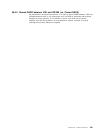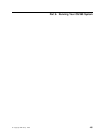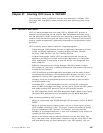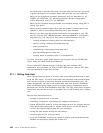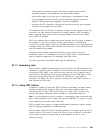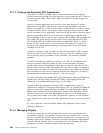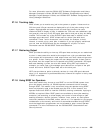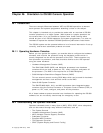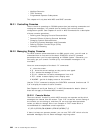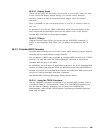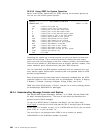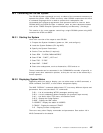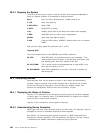For more information see the
OS/390 ISPF Software Configuration and Library
Manager Developer
′
s Guide, OS/390 ISPF Software Configuration and Library
Manager Project Manager
′
s Guide,
and
OS/390 ISPF Software Configuration and
Library Manager Reference.
27.1.6 Tracking Jobs
SDSF allows you to monitor any job in the system or sysplex. Values such as
CPU time and I/Os per second are displayed for all of the jobs running in the
system. Sophisticated and easy-to-use sort and filter functions let users
customize SDSF′s display of jobs. In addition the TSO user who submitted a job
can generally view any of the JES spool data sets for that job as they are being
created. This includes any of the SYSOUT spool data sets in addition to the
message spool data sets. SDSF allows users to control jobs with short
commands. These ″action characters″ can be used, for example, to hold,
release, or cancel one or more jobs. In addition if you are properly authorized
you can view the SYSLOG and see the messages for all jobs. For more
information see the
OS/390 SDSF Guide and Reference.
27.1.7 Retrieving Output
SDSF provides the ability to view any JES spool data set that you are authorized
to view. In most cases this would be the output from a job you submitted. Most
of the output will be queued to a held output class such that it does not get sent
to a printer. If after viewing the output the user determines that it does need to
be printed, then the output can be re-queued using SDSF commands. JES spool
data sets awaiting a printer can also be viewed. Using ISPF split screen for
example, you could view a job message spool data set on one part of the split
screen and view a SYSOUT spool data set on the other part.
ISPF also provides an option to directly retrieve (or view) JES spool data and
store it in a sequential or partitioned data set, however this option is rarely used
if SDSF is available.
27.1.8 Using SDSF for Operators
Some data centers may choose to use SDSF to run the OS/390 system since
given the proper authority, all OS/390 operator commands can be entered
through SDSF. This makes it very convenient since the operator using SDSF
does not physically need to be located near the CPU. In this scenario, the
operator would use SDSF to view the SYSLOG, entering commands, replying to
WTORs as required. Other SDSF panels are available to show jobs awaiting
execution, job executing, to allow display and control of such things as jobs
awaiting execution, devices (printers, initiators, lines, and so on) and system
resources (members of the MAS, nodes, and so on). It′s important to give proper
consideration to the security and levels of commands available through SDSF,
such that application programmers are not allowed to enter normal operator
commands. For more information see the
OS/390 SDSF Customization and
Security
manual.
Chapter 27. Orienting ICCF Users to TSO/ISPF 441



